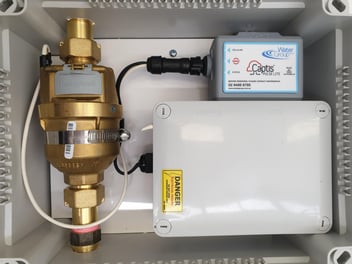Telstra tech makes Internet of Things water meters a reality
Narrowband Internet of Things (NB-IoT) enabled smart water meters are now a reality for utilities, following Telstra’s announcement of its NB-IoT network going live across all major local cities.
NB-IoT is a Low Power Wide Area Network (LPWAN) radio technology standard developed to enable a wide range of devices and services to be connected using cellular telecommunications bands.
Water conservation consultancy WaterGroup said with Telstra’s NB-IoT Network now switched on, it can deploy its ultrasonic, intelligent water meters to provide remote online meter readings.
WaterGroup Managing Director Guenter Hauber-Davison said this will save millions of dollars in manual water meter reading costs.
“More importantly, though, it will save many millions of litres of precious drinking water by identifying leakage as and when it happens,” he said.
“Utilities can now deploy smart water meters hassle free into residential dwellings, apartments and difficult-to-access basements, due to the deep long range network coverage of NB-IoT.”
According to Hauber-Davison, it will also provide utilities with a cost-effective way to understand in near real-time where the water is going – and where it is lost – in their water distribution network.
“Utilities will also for the first time be able to bring the Australian consumer what they want – a future of smart water use monitoring where live consumption data is displayed on their smartphones with corresponding alarms. It will make bill shock and unnoticed leaks a thing of the past,” he said.
Hauber-Davison claimed the new NB-IoT enabled water meters are expected to collectively save Australian water users 160ML of water a year, enough to supply a city of 900,000 residents with water.
For example, he said less than six weeks after Australian National University engaged WaterGroup to install a smart metering system on its campus, approximately $300,000 in potential water usage savings were identified.

